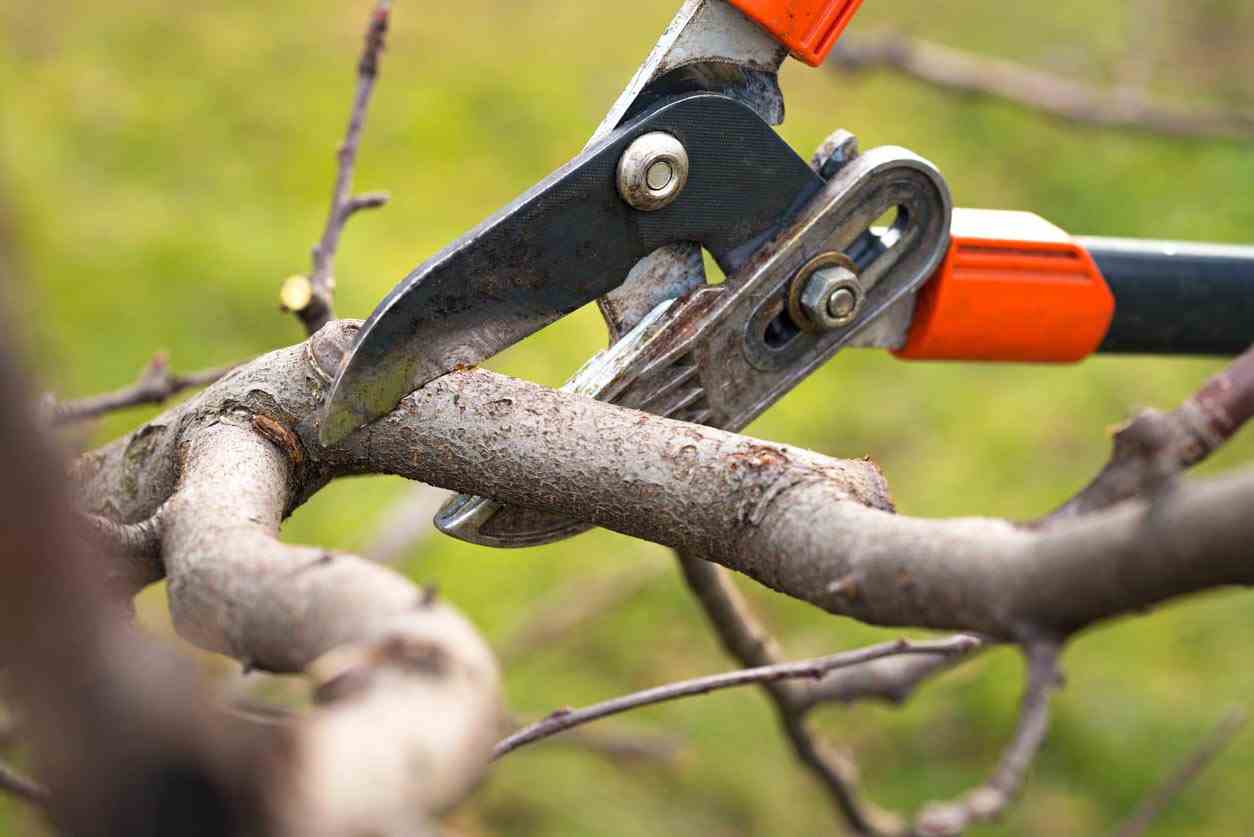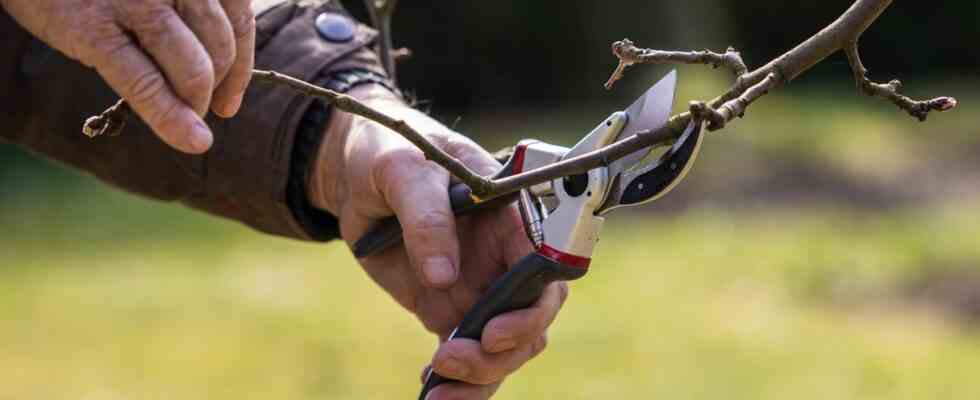An optional, but important size
fruiting size it’s not mandatory, if the tree does not benefit, it does not get sick and its growth and life cycle are not really affected. But he is strongly recommended to carry out this pruning on the fruit trees for which it is important. First, it allows the tree to maintain a beautiful shape, structured and airy. It therefore prevents the tree from being too cluttered with dead branches while making it more productive.
However, it is necessary to be attentive to the fact that this size is indicated only for adult trees, younger trees not only do not need it, but it can harm their growth.
When to prune fruiting?

The fruiting size is ideally done in winter. It is nevertheless necessary to avoid periods of frost during which the pruned trees are weakened. For some fruit trees, including apricot trees, apple trees and peach trees, the ideal period for fruiting pruning is rather around February.
This pruning is not necessarily carried out every year and it is up to the gardener or the farmer to assess the state of the tree to decide whether this pruning will be beneficial to it or if it is necessary to wait another year.
How to carry out fruiting pruning?

Fruiting size mainly concerns the main branches of the tree. It is a question of pruning these branches, leaving on each at least three eyes to have a good fruiting.
It’s a delicate size which, if successful, promotes the life cycle of the tree and its fruiting, but in the event of failure or excessive pruning, the tree may suffer throughout the season, or even longer.
To perform fruiting pruning on a fruit tree, follow these steps:
Remove old fruit and dead branches
This is a step prior to fruiting pruning. If there are old fruits that have not fallen off, you must remove thembefore removing all dead branches.
It is also necessary to remove all the branches which push in the direction of the tree, because these harm the fructification by excessively encumbering the tree.
Rejuvenate the tree
After cleaning the tree, you can go to the next step which is the rejuvenation. This consists of anticipate the renewal of producing branches in the following season. To do this, you must carefully observe the branches and identify the renewal shoots that are oriented upwards. Those that bore fruit in the previous season were bent down due to weight. These are the branches that should be deleted.
Remove badly branched branches
This operation concerns thicker branches than those concerned by the rejuvenation. It is here about remove poorly branched branches, as they generally produce few fruits. It is therefore necessary to simplify the structure of the tree by removing these branches to promote the appearance of fruiting branches. Ultimately, this operation, which requires some experience, will make it possible to obtain new productive branches on aging branches.
Reduce tree clutter
A tree that is too ramified, that is to say that has branches that are too long, is a tree that loses productivity. Must therefore shorten the ends of the branches by pruning them to remove one or two ramifications on each of them. By sticking to this rule, the structure of the tree is preserved, but its volume and size are reducedwhich will certainly promote fruiting the following season.
Fruiting body pruning can therefore be very beneficial to the tree and the fruiting body, but it involves delicate operations which, if they are poorly carried out or if the size is too extensive, can be more harmful than beneficial. It is for this reason that it is recommended to call on a professional to carry out the pruning of fruiting.

